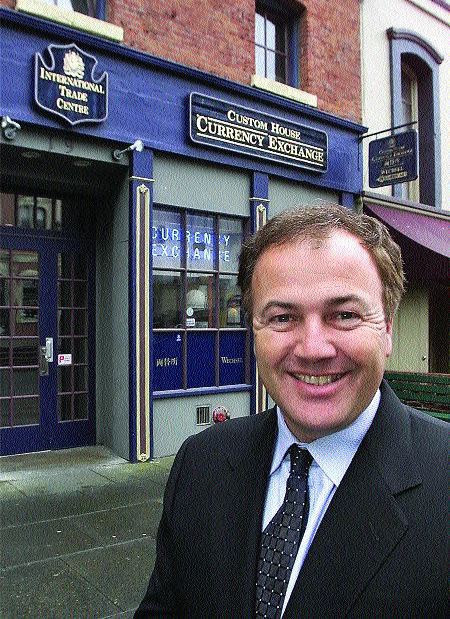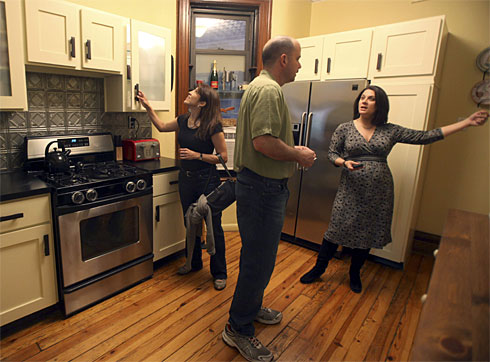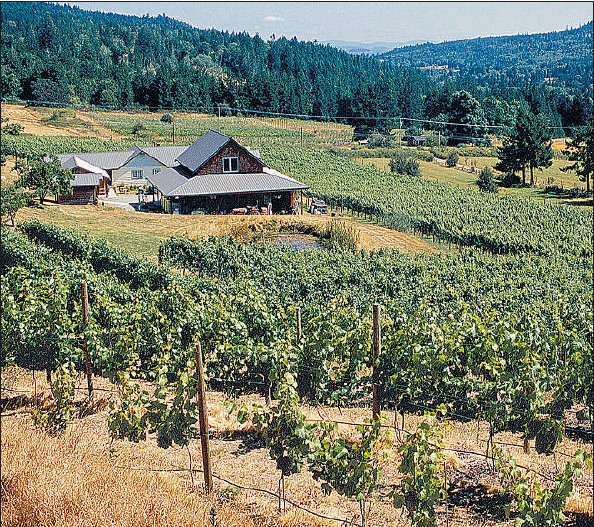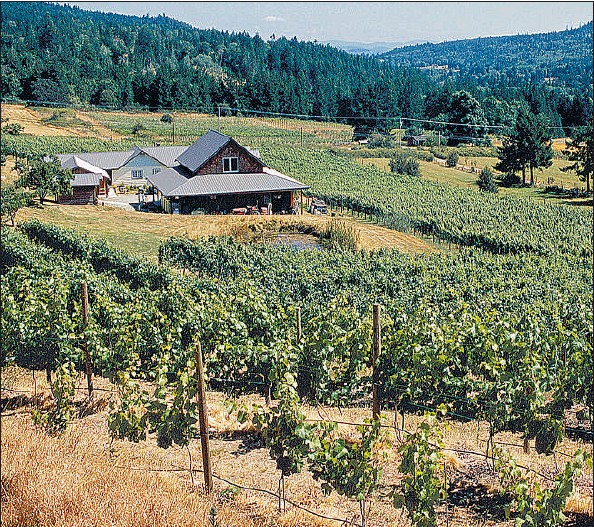Oldest home outside downtown, unique shops among attractions
Michael Sasges
Sun

Veronika Baspaly in the Lark store: ‘Some people think the evolution of the area is too slow; some don’t like to see change at all.’ Photograph by: Bill Keay, Vancouver Sun
At city hall, Vancouver‘s Mount Pleasant neighbourhood is ”one of the most diverse communities in the city” and an ”eclectic mix of new and old homes, industry, educational facilities and artist live/work studios.”
The oldest single-family-detached residence in the city outside of the downtown is located there. It was built in 1889.
For Krista Shirreff, organizer of the Block sales and marketing campaign and a Mount Pleasant resident, the neighbourhood is singular. ”It is a totally emerging, hip, authentic neighbourhood that has a very distinct character. It’s not a cookie-cutter neighbourhood.”
The neighbourhood’s western boundary is Cambie Street; it’s eastern boundary, Clark Drive. To the north, Great Northern Way and Second Avenue are the boundaries; to the south, Kingsway and 16th Avenue
In the just released Wallpaper* City Guide: Vancouver, Mount Pleasant is “South Main,” or SoMa, and “quirky,” but “moving upmarket as condos and fashion stores spring up.”
The oldest commercial building in the city outside the downtown is located there. It was built in 1892.
For Veronika Baspaly, Mount Pleasant is both the neighbourhood in which she makes her home and operates her business.
With her husband, Baspaly is the owner of the Lark clothing and accessories store, for men and women, a ”singular experience of chic” in the opinion of the Wallpaper* guide.
Baspaly has operated the store for more than four years, the last two from its current Main Street location. What follows are some of her thoughts on her ‘hood.
– – –
Q Why is Lark located in Mount Pleasant rather than another Vancouver neighbourhood?
A The diversity of the area was really interesting to us. Many of our friends live in Mount Pleasant and some of them have businesses as well and to be a part of that community seemed like a charmed life. Five years ago when we were drafting our business plan we thought about other neighbourhoods in Vancouver and we didn’t see ourselves fitting into those communities very well. At that time rent in this area wasn’t too high and there seemed to be a lot of growth happening fairly quickly. So we thought we’d put our roots down in an area that was evolving in many different ways.
Q What is keeping Lark in the neighbourhood?
A That’s a complicated question to answer briefly. Being this close to the Olympic Village is exciting: it means that the world will be watching and also visiting in February. We have really great landlords which is very rare in Vancouver. They own the AION art gallery which is now located on East 15th. It’s great to have people who care about their property as landlords. This neighbourhood is our home so leaving it would be uprooting our lives, not just our business.
Q Are Lark’s customers mainly your neighbours?
A Many of our best customers live in other areas. Lark is a destination for them. Vancouver is small and what we do here is so niche that not everyone understands our inspirations. Those who do understand are willing to travel to get to us.
Q What do visitors to the store who are your neighbours say to you about their neighbourhood?
A I find that as diverse as the people who live here are, their opinions are also as diverse. I hear people speak very positively about the area and the new businesses opening. Some people think the evolution of the area is too slow; some don’t like to see change at all.
Q Is there a moment or an experience inside or outside the store that exemplifies, for you, the Mount Pleasant “sensibility” or spirit?
A When my husband and I got Hunter, our English bulldog, we took her to Antisocial, the skate shop half a block up from Lark, and Michelle, the owner, pulled out a skateboard for her to ride. Michelle took pictures and posted them on her store website. The sense of togetherness among many of the business owners is amazing. We look after one another, no matter how different we are or how little we appear to have in common.
Q Why are there so many retailers of singular, or unique, clothing and accessories on Main Street?
A Main Street is one of the few areas that has smaller commercial spaces unsuitable for chains and box stores, but perfect for specialty shops that are very niche. Unlike many of the other areas in Vancouver that have this benefit, Mount Pleasant also has a history of community. It was strongest 20 years ago when the “Shame the John’s” campaign was started by local residents and businesses to counter the emergence of prostitution and drugs in the area. The Mount Pleasant business association was formed to create a link to city hall and also to make sure that the social problems that were turning the neighbourhood dangerous would not return. The evolution of this neighbourhood has brought it back to its roots which were that of a family friendly and small-business friendly community.
Q Why are there so many coffee shops along Main Street? And do you have a favourite?
A The real answer lies in antiquated liquor laws. Most cities have streets lined with pubs, lounges, bars, clubs, cafes, restaurants all serving alcohol in a responsible and adult way. In Vancouver the licensing is so strict that opening anything except a café is nearly impossible. Before the concept for Lark came about we tried to open a cocktail bar in Mount Pleasant. I am now well schooled in the inner workings of city hall. It’s such a shame because it really does stunt the city from flourishing in many ways.
I like the coffee at Gene Café. The espresso is strong and has a nice rich cream. In my opinion it’s the best coffee in the city. I like the patio and coffee at JJBean, and the service is super fast.
Q Lastly, what do you want Vancouver Sun readers to know about Mount Pleasant?
A I want them to know that this area has so much Vancouver history. It’s the first suburb, it’s been through many eras of prosperity and neglect. It’s on the rise of prosperity again and with the attentiveness of its caretakers, residents and business owners, it will only get better. Because it has always lived under the radar of the mainstream and big business it has been allowed to develop its very own character that is actually influenced by everyone that lives and works in it. It’s nice to be in a place where everyone does actually matter.
Readers who want to know more about Mount Pleasant‘s history will enjoy a city hall publication, Mount Pleasant Historic Context Statement, available at vancouver.ca on the Internet.
© Copyright (c) The Vancouver Sun









